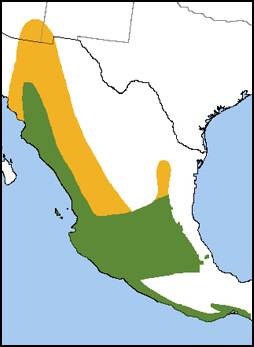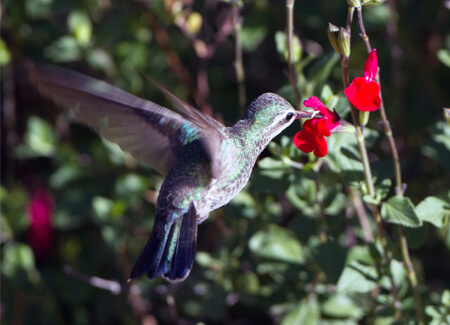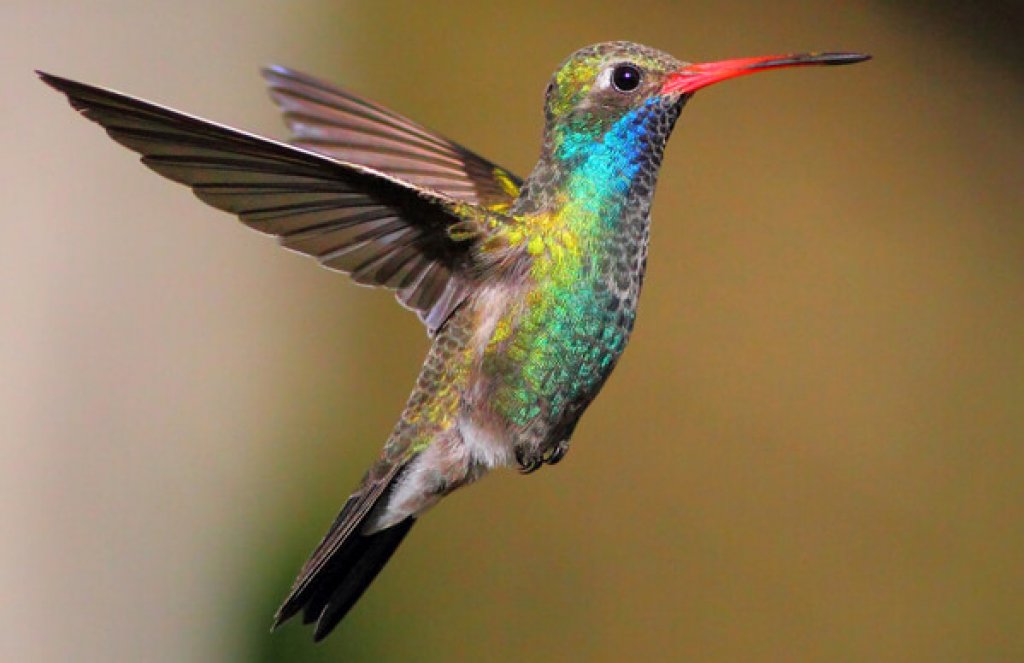 The attractive Broad-billed Hummingbird is a shining metallic green with a straight, slender red bill tipped in black. The male has a deep blue throat, and the female a white eye stripe.
The attractive Broad-billed Hummingbird is a shining metallic green with a straight, slender red bill tipped in black. The male has a deep blue throat, and the female a white eye stripe.
Primarily a Mexican species, this hummingbird's breeding range barely reaches the U.S. Southwest, where it shares riparian habitat with the endangered Southwestern Willow Flycatcher, Western Yellow-billed Cuckoo, and Elf Owl. Like these species, the Broad-billed Hummingbird's U.S. population is threatened by habitat loss.
This hummingbird is partially migratory, with the few U.S. breeders—found only as far north as southeastern Arizona—heading to Mexico for the winter. Broad-billed Hummingbirds that nest in Mexico are resident year-round.
Broad-billed Hummingbird Biology
Male Broad-billed Hummingbirds establish feeding territories, where they aggressively chase away other males as well as large insects, such as bumblebees and hawk moths. They use aerial flights and intimidating displays to defend their territories and court females by flying a u-shaped pattern back and forth in front of them.
Sign up for ABC's eNews to learn how you can help protect birds
From Costa's Hummingbird to the Marvelous Spatuletail, hummingbirds are solitary in all aspects of life other than breeding. Species differ widely on preferred nest sites, with Broad-billed Hummingbirds usually placing their nests 3 to 9 feet above the ground in a deciduous shrub or low tree. (By contrast, Ruby-throats tend to build their nests 10 to 40 feet up.)

Female Broad-billed Hummingbird by Martha Marks, Shutterstock
The females build the nest, saddling a loose cup of grasses, other plant fibers, and spider webs on a horizontal or drooping branch or placing it in a fork. The Broad-bill camouflages the outside of her nest with bits of leaves or bark but—unlike many hummingbirds—doesn't usually decorate the nest with lichens.
The Broad-billed Hummingbird consumes almost twice its body weight in flower nectar each day, as do many other hummers including Rufous and Allen's. It is quick to take advantage of gardens and residential areas with abundant flowers and may stray widely from its normal habitats in search of new foraging sites. The birds also catch insects on the wing.
Keeping Broad-bills Stable
Unlike western species such as Tricolored Blackbird, which is declining precipitously, the Broad-billed Hummingbird population is thought to be stable or even increasing. Our work to conserve western riparian habitat for the western Yellow-billed Cuckoo and Southwestern Willow Flycatcher will help to keep it that way.
In addition, keeping hummingbirds in the public eye can help lead to their conservation. ABC partnered with Victor Emanuel Nature Tours and the Tucson Audubon Society to purchase a premier hummingbird spot in Patagonia, Arizona, now called the Paton Center for Hummingbirds. The Broad-billed Hummingbird can be seen at the Center's many feeders, along with Violet-crowned, Anna's, and Black-chinned Hummingbirds.
Donate to support ABC's conservation mission!



















































